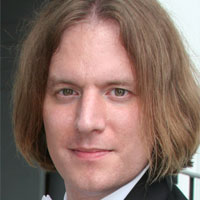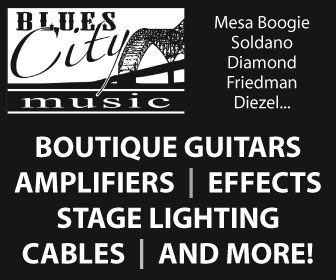Danielle Ezzo of Dezzoster
A Preview Of Storia D'amore e Decadere
Since the early days of rock and roll, one's style and dress is a good indicator of the genre of music that rocked your world. The looks of punk, metal, grunge and hip-hop have become as iconic and distinctive as the musical movements that inspired them.
Music and fashion have become almost synonymous in the MTV age. The knock on the network is that it's too focused these days on style, fashion and culture to the disregard of making music matter anymore. At the most recently MTV Video Music Awards, the marriage of music and fashion might have reached its self-indulgent peak when Diddy, the event's host, offered $50,000 to the best-dressed member of each sex. For those of you who may have missed it, Snoop and Gwen Stefani took the honors.
But the relationship between music and fashion is often more meaningful and has had real and significant influence on our culture. Elvis in the 1950s, The Beatles in the 1960s, Disco in the 1970s, Madonna in the 1980s, Grunge in the 1990s and Hip-Hop in the first decade of the new century have made a broader impact on all of our lives that goes far beyond records sold or a weekend shopping trip to the mall. The music and fashion play off each other to both reflect and change the culture, eventually pushing everything forward in a bold new artistic and creative direction.
Making a career in fashion can be just as challenging as building a career in music. Starting out with an interest in clothing or art, leaning some technical skills and deciding to pursue one's love as a life's work is just the beginning. Actually making it happen requires an amazing quality of persistence and hard work, being able to deal with disappointment and grasping any opportunity that can be created. Plus, it requires talent, creativity and the ability to stand out in a crowd of lots of others who have the same dreams and aspirations.
A few months ago, Chorus and Verse did a feature on The Pennyroyals after attending a showcase for the band at CBGB in New York City. When the band performed, their sense of style was immediately obvious, and it turns out that their stage attire for the evening had been designed by several very talented local designers. One of those designers, Danielle Ezzo of Dezzoster, is a graduate of the Savannah College of Art and Design in Georgia and currently lives in Brooklyn while working at Studios GO, a firm of architects, furniture, textile, and product designers, in Manhattan. Her work is distinctive, artistic and manages to seem traditional and classic on first glance, while revealing itself to be cutting-edge, innovative and imaginative. In addition to her work in fashion, which includes several projects for bands and musicians, she has done photography work for bands as well, again combining music with other artistic and creative media.
Chorus and Verse spoke with Ezzo to investigate how music and fashion affect each other, and to find out about her designs and the development of her Dezzoster brand. She is currently working on a line to premiere at the Maskara (www.maskaranyc.com) show in October, after a successfully showing at the last Maskara event in July. We asked Ezzo about her involvement in the Legendary Festival of Deviants, the opportunities it has created for her and the future plans and aspirations for this talented designer who is one to watch on the New York City fashion scene.
What do you see as the connection between music and fashion? How have each influenced each other and do you feel that fashion designers can use music as a source of inspiration?
The most obvious connection is the ability to express one's self through the aid of a medium. A way to get your message across - whether it be chord progression or stitchery - it's all art. They can totally influence each other, and have for many centuries.
The sheer nature of music is very inspiring. Genres lend themselves to creating lifestyles, and lifestyles create trends and trends influence fashion, and vise versa.
What came first for you, an interest in fashion design or a love of music? When did you first become interested in fashion and design and how did you come to connect fashion with music?
Music had no choice but to come first. Since I was very young, I was playing air guitar and singing to Pink Floyd and the Beastie Boys. As I grew up, I became involved with the New Jersey music scene, eventually building friendships with local bands. Now, of course, years - many years - have past.. We pretend to have grown up, gone off to college, and are working toward careers. For me, art is my passion, and that's what I went to school for. However, I didn't start off wanting to go in to fashion, per se. I love all the arts, and could have seen myself going into any of them - product design, furniture design, painting, photography. I took classes in all the fine arts, 2 and 3D design, as well as fashion, textiles and photography. I fell in love with all three. I entered in several fashion shows and art exhibits, and had several clients while in school. After leaving school, I moved to New York City. I had a couple leads on work, and knew that if I could make it there I could make it virtually anywhere. I hooked up with my old friends and musicians I grew up with and started applying my knowledge and love for art into the culture I grew up in.
Give us a little technical information about your work. What fabrics and materials do you prefer to use, what sewing machine or other equipment do you consider essential and how long does it usually take for you to put a piece together?
I don't really have a bias esthetically; that depends on whatever project I'm working on. I do, however, strive to create things that are sustainable and eco-friendly, which can limit tremendously the fabric I use - primarily synthetics, because many machine processes use toxic chemicals, such as glues and dyes. And the use of unfarmed rubbers which deplete our essential natural resources. As far as my weapons of disaster and destruction go, I'm striving to do more and more work by hand. I think hand sewing is incredible art that few utilize anymore. Other than that, Juki and Viking are two are the best brands when it comes to sewing machines and sergers.
Give us some insight into your creative process. What sorts of things give you inspiration for a design and how many sketches do you normally put together before actually working on a piece? Once you start sewing and cutting, do you normally have a final design in your head or do you continue to change things as you work?
Every medium I work in is a little different, but with fashion I gain inspiration for lots of things. [With] each line, I will first pick an object/event/lifestyle, a couple descriptive words for fabric and cut, and a color palette. For example, my next line, "Storia D'amore e Decadere" (A Story of Love and Decay), was inspired by lives of early women aviators; the tragedy and challenge surrounding it - deconstructed, classic, and vintage with a modern twist - using metal and wire to form worn sculpture that the body and fabric [will] interact with - chocolate, cream, white, and charcoal. I use that concept and filter it through the content.
If a line is roughly six - eight pieces, I'll create as little as 20-60 sketches. This helps me to get out all the bad ideas and build upon the good ones, enabling me to fully flesh out my concept.
How did you first hear about and become involved with Maskara? Who are the key people involved with putting the event together, and what do you know about how the concept came about?
Unfortunately, I don't know the entire story, but I do know that the brains behind Maskara is Xenia for Lime Crime Clothing and her bandmate Mark from their fairytale rock band, Skysalt. She too wanted to integrate fashion and music, and so became the legendary festival of deviants, Maskara.
I first heard of the event through a good friend of mine, Cristina Capasso of Electra Lux Inc., who was featuring her designs in the show. Through her, I contacted Xenia to see if I could model. I did, and that began the start of a wonderful friendship. The next show, Maskara - Fabulous Las Vegas, I was able to feature my designs, and lend a hand in booking bands (Fixer), burlesque (Veronica Varlow), and models.
Each event has a theme. One of the first was "Glitter." This past one, "Las Vegas." Now, the "Celebrity Ball." Dress accordingly and be rewarded!
Talk about your involvement with the last Maskara show in July. What was the inspiration for some of your designs at that show and how did you approach the "Fabulous Las Vegas" theme of the evening?
Having the design revolve around a predetermined theme can be challenging. When I think of Las Vegas I think of hot show girls! But, then I thought, why not show guys? And there spawned my theme. I wanted my line to be an inverse of what the popular belief a show girl should be. I had four delicious men and two beautiful women to enforce this concept. I wanted them to look alluring dangerous, sexy, with, of course, a backbone of glamour.
One of your pieces at the July Maskara was a white ensemble that has a feathered top and high boots. Can you comment on this piece, how you put it together and what were your thoughts on the design?
This was a three-piece costume consisting of a bleached feather halter, bloomers, and corseted bussle with garters. The idea for the women to have an appearance of sensual purity, innocent and naughty all at the same time.
What was the reaction of people in attendance to your work at the July show? Did any opportunities develop as a result of your showing there and were you happy with the way that your clothes looked when they were finally up on the runway?
That day was hellish for me. Being late to the show, I showed my models on stage with myself not far behind. So I paid very little attention to the audiences' reaction. Although, once my set was over, I received much praise and even was able to arrange selling of some of the items. Afterward, I've had several commissions directly related to it. So, I guess the reaction was good!
I was happy for the most part, but as a whole the line was not in its full state of completion. Unfortunately, a couple events made finishing much more challenging. Every event is a learning process. So, for that, I'm happy.
Can you give us a preview of what you'll be presenting at the next Maskara event in October? What is the theme that you're working with to put the line together and how many pieces are you planning to debut?
I mentioned the line, "Storia D'amore e Decadere". You will see a taste of this at the next Maskara. It's a line that I will be working on for the remainder of 2005 and most of 2006. It will be entered in two very prestigious fashion shows in New York City for emerging designers in late 2006. So you will get to see the first stages of my creative process in three-four outfits.
Finish off by giving us a description of your style and what sort of projects you're most interested in working on. What are some of your goals as your career develops?
My style, that's a hard description to formalize, and I'm not going to, either! I let the viewers and critics determine that. They say art, "is made by the audience not the artist" and I'm a firm believer. However, I'm inspired by 1920-1930's patterns/lifestyles, theatrical/costume materials and construction, and, of course, robots! I want my clothes to defy gravity.
I'm interested [in] working on all projects that challenge my creativity. I'm not interested in reinventing the wheel. I want to make things people have never seen before. The perfect project for me would probably be a wedding entire that integrated cybernetics and medical fetish!
My goals are to develop my business sense and business relationships more, so in the near future I sell to not just a couple boutiques locally, but many more nationally. I also want to hand pick a family of creators to work solely of the construction of Dezzoster so I can focus my energy on designing. I'm not just building a company - I'm building an empire!
[ Website: www.dezzoster.com ]

Matt Mrowicki founded Chorus and Verse in 2001. He is a rock star designer and technologist, Internet professional, content creator, and entrepreneur specializing in web development, IT consulting, branding, social media and online marketing. www.imprtech.com









